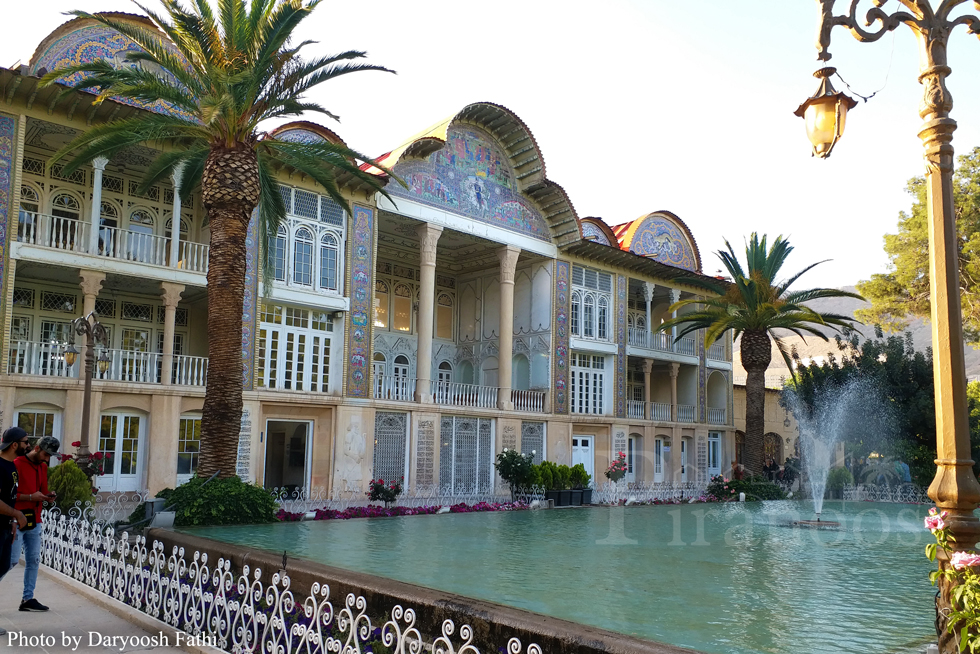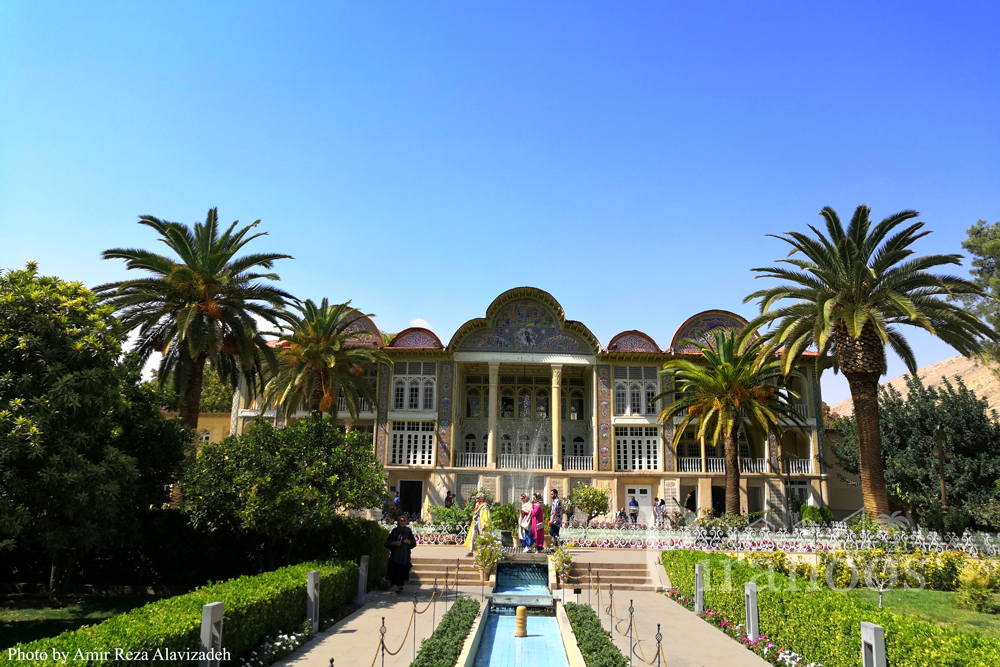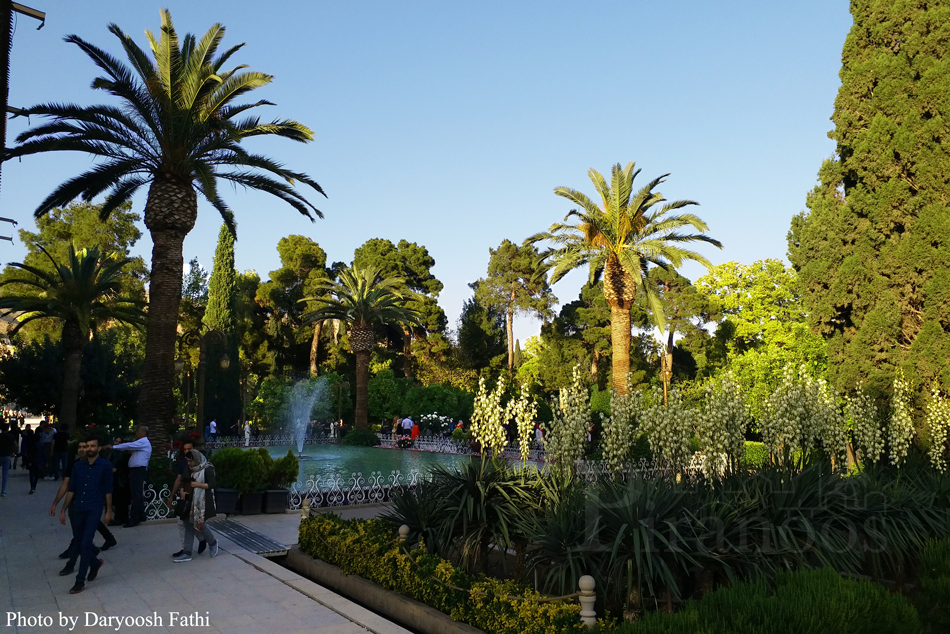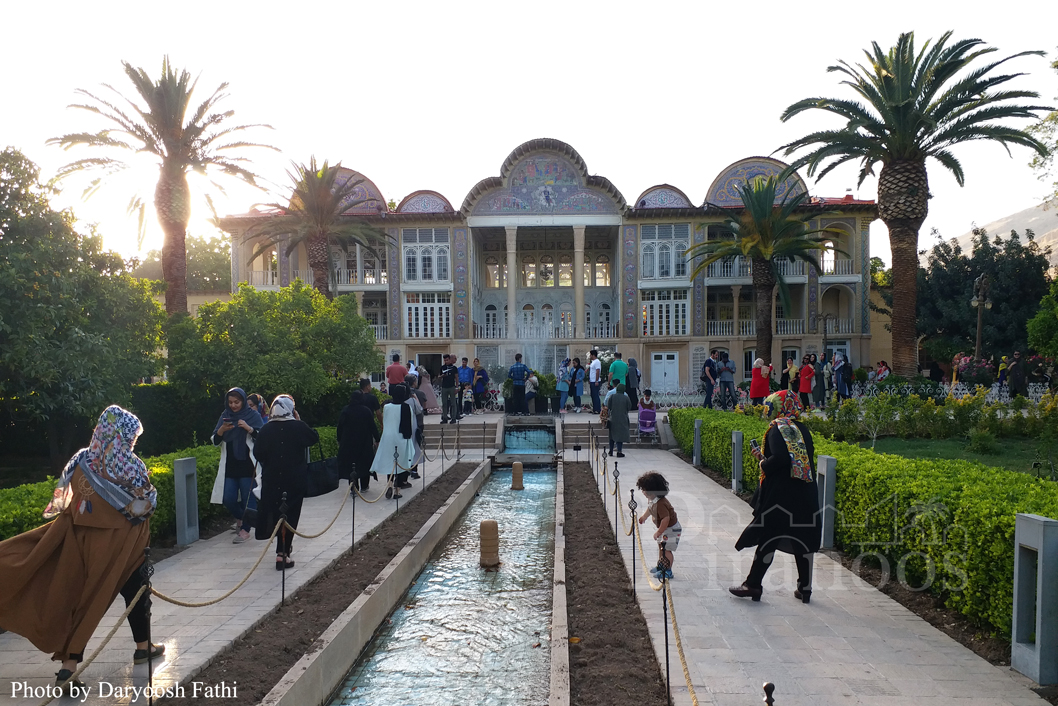The name of Iran has intertwined with Persian civilization, Persian carpets, Persian cats and most importantly, Persian gardens! Garden is an important element in Iranian design and plays an essential role in Iranian architecture. The aim of the traditional style of Persian or Iranian gardens is to show an example of the paradise garden on earth. The beauty and the philosophy behind Persian gardens have influenced the design of gardens all around the world. Many similar examples exist in different countries such as Alhambra garden in Spain to India and beyond.

One of the most astonishing examples of a Persian garden in Iran is Eram garden. “Eram” is the Persianized version of the Arabic word “Iram”, literally meaning heaven. As you step into the garden, you will immediately understand why they call it Eram. The garden is a feast for the eyes and gently welcomes you with its beauty. If you like to know more about this magical garden, join us in this article to explore it a little bit deeper together!
In the northwest of the city of Shiraz, the beautiful garden of Eram is located. Khoshk river of Shiraz extends from east to west at the southern part of Eram garden. The garden itself expands in an area more than three hectares and hundreds of citrus and cedar trees cover it. The Eram garden is easily accessible if you stay in the city.

The exact date of construction and the first founder of the Eram Garden are not known to us. But there are descriptions of it in travelogues dating back to the tenth and eleventh century AH. This garden has also existed in the Seljuks era. Karim Khan Zand renovated and improved the garden during the Zandiyeh period. In Qajar and Pahlavi eras, this garden was the headquarters of the Qashqai tribe. Mohammad Qoli Khan, the chief of the tribe, ordered the construction of the original pavilion. He planted many trees in the garden such as pine, orange, cypress, and persimmon. Because of their political orientations, however, the government deported them and confiscated the garden.
During the reign of Nasser al-Din Shah Qajar, Hussein Ali Khan Nasir al-Molk constructed another mansion in the garden. After his death, his niece completed the mentioned building. At that time, the garden was a property of the Qavami family in Shiraz. Today, the University of Shiraz owns the garden. In 2011, the garden was included in the list of the UNESCO World Heritage Sites along with eight other Iranian gardens.

The diversity of the existing plants of the garden is unbelievable. Here you can see many different plants and flowers from all around the world. The most beautiful part of the garden is a street which extends in the middle of it from east to west. There are towering cedar trees planted on both sides which add to the beauty of the garden. There is also a tree in this part called “Sarv-e Naz” which dates back to 3000 years ago. It is unique among other trees in the garden and you cannot find a similar one in other parts of the garden. The beautiful flowers, the refreshing air, and aromatic myrtles have turned the garden to a great tourist destination. It is a wonderful attraction especially if you visit it during spring.
The essential elements of a true Persian garden exist here. Sunlight and its effects are very important in designing a Persian garden. The dry heat of Iran makes shade and water a significant element and that’s why trees and pavilions are used to block the sun. Besides, a pool full of fresh water always exists in the middle of the garden and in front of the building. The Persian style integrates indoors with outdoors through the connection of a surrounding garden with an inner courtyard. Eram garden is an excellent example to understand the philosophy of such gardens.

As mentioned before, the main pavilion dates back to the Qajar era. The building is in the middle of the garden and is the central core of this place. Although the pavilion was built during the Qajar era, it features the architectural style of Zandiyeh. Considering the architecture, the paintings and the tiling of the building, it can be one of the masterpieces of Qajar architecture. The rooms in the basement were a great place to relax in the hot summer days. They are decorated with colorful tiles including tiles inscribed with poems from the famous Persian poet, Hafez. The columns of the upper floors resemble the columns of Persepolis. There is also a large painting installed at the front of the building. It depicts some scenes of Shahnameh (the book of kings by Ferdowsi) and the battles of the Qajar kings.